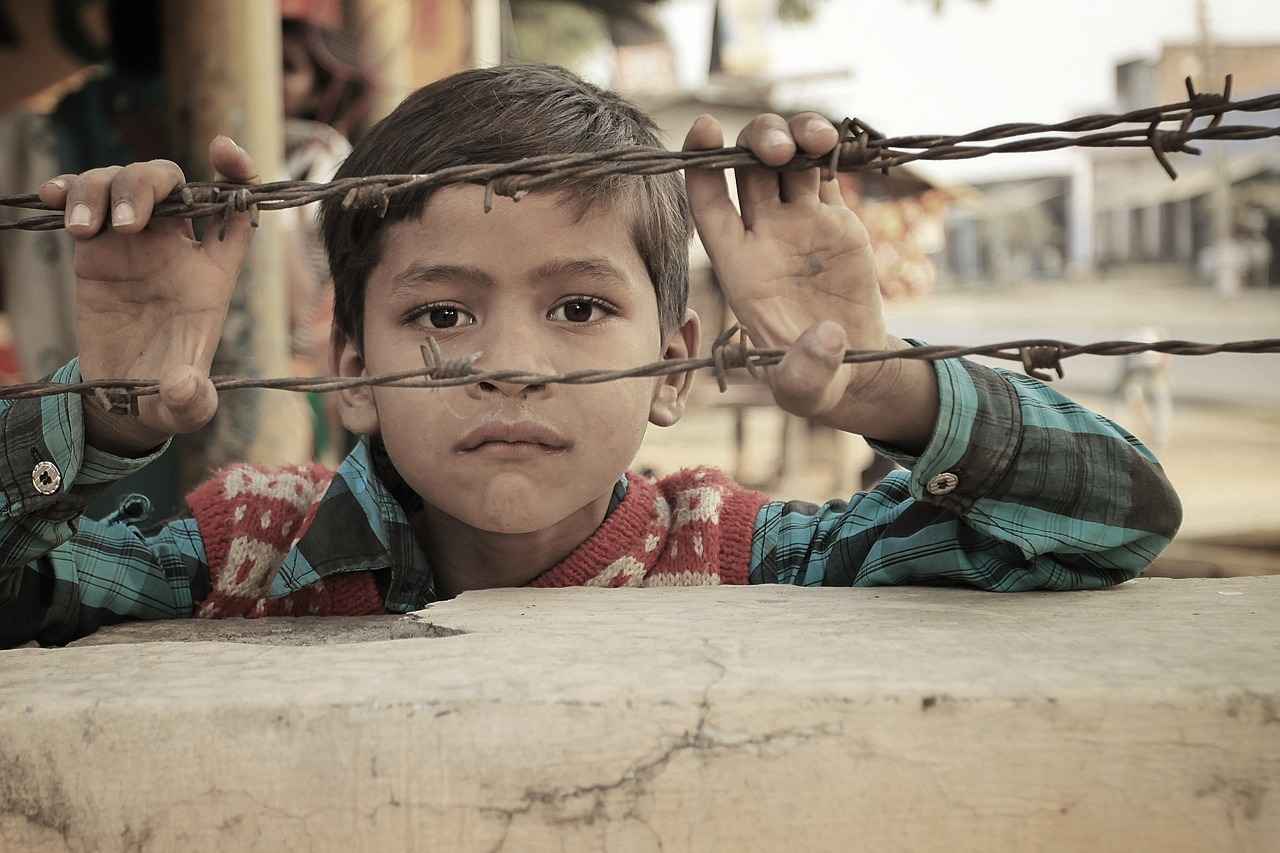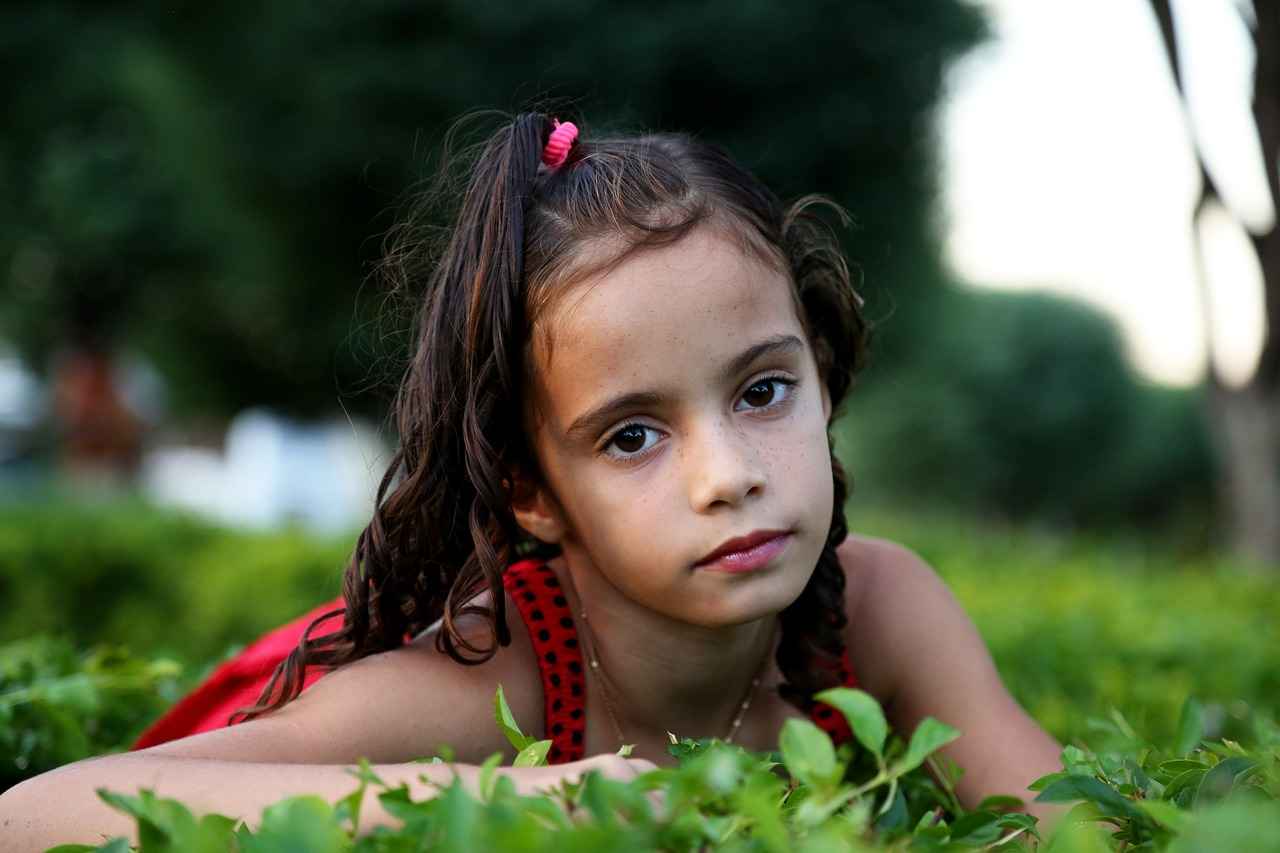This article delves into the world of engaging Spanish-language movies for children, highlighting their educational value, key themes, and recommendations that can enhance language learning through the medium of entertainment.
Why Watch Movies in Spanish?
Watching movies in Spanish provides a unique opportunity for children to immerse themselves in the language. It not only improves their language skills but also enhances vocabulary and offers valuable cultural insights. This form of learning is both fun and effective, making it an ideal choice for young audiences.
Top Spanish Movies for Kids
Here is a curated list of some of the best Spanish films for children, featuring various genres that captivate and educate:
- Animated Films
- “Coco” – A heartwarming story that celebrates family and culture, allowing kids to learn Spanish through music and storytelling.
- “Frozen II” (Spanish Version) – This version retains the charm of the original while helping kids familiarize themselves with the language through catchy songs.
- Live-Action Movies
- “El Viaje de Said” – A poignant tale about friendship and adventure, perfect for older kids learning Spanish.
- “Los Reyes” – A unique film that offers insights into the lives of stray dogs in Chile, blending humor and heart.
Benefits of Learning Spanish Through Movies
Utilizing films as a learning tool promotes listening skills, pronunciation, and cultural understanding, making the language acquisition process enjoyable.
- Improving Listening Skills – Movies expose children to native speakers, aiding in better comprehension and pronunciation.
- Expanding Vocabulary – Films introduce new words and phrases in context, enhancing vocabulary retention.
How to Maximize Learning from Movies
To enhance language learning, parents and educators can implement strategies such as:
- Using Subtitles Effectively – Watching with Spanish subtitles helps connect spoken and written language.
- Engaging in Discussions – Post-movie discussions encourage kids to express their thoughts in Spanish.
Conclusion: Making Language Learning Enjoyable
Incorporating Spanish movies into learning routines not only makes language acquisition enjoyable but also fosters a deeper appreciation for diverse cultures, enriching children’s educational experiences.

Why Watch Movies in Spanish?
Watching movies in Spanish is not just a fun activity; it is a powerful tool for language acquisition and cultural immersion. By engaging with Spanish-language films, children can experience a multitude of benefits that significantly enhance their learning journey.
- Improved Language Skills: Movies provide exposure to authentic language usage, helping children grasp the nuances of conversation, slang, and idiomatic expressions. This exposure is crucial for developing fluency.
- Enhanced Vocabulary: As kids watch characters interact in various contexts, they encounter new words and phrases. This contextual learning aids in vocabulary retention and encourages active language use.
- Cultural Insights: Films often reflect the culture, traditions, and values of Spanish-speaking countries. Through storytelling, children gain a deeper understanding of diverse cultures, fostering empathy and global awareness.
- Entertainment Value: Learning becomes enjoyable when it is integrated into fun activities. Movies captivate young audiences, making the process of learning a new language feel less like a chore and more like an adventure.
Moreover, watching movies in Spanish can help children develop their listening skills. They become accustomed to different accents and pronunciations, which is essential for effective communication. As they follow the plot and characters, they also improve their comprehension abilities.
In conclusion, incorporating Spanish films into a child’s learning routine provides a multifaceted approach to language acquisition. It not only makes learning enjoyable but also enriches their understanding of the world around them. By embracing this immersive experience, children can cultivate a lifelong love for the Spanish language and its rich cultural heritage.

Top Spanish Movies for Kids
In today’s globalized world, exposing children to different languages and cultures is more important than ever. One of the most enjoyable ways to introduce kids to the Spanish language is through engaging films. Below, we present a carefully curated list of , featuring a variety of genres that not only entertain but also educate young audiences.
| Movie Title | Genre | Synopsis |
|---|---|---|
| Coco | Animation | A vibrant story that explores themes of family and tradition, set against the backdrop of the Mexican Day of the Dead. |
| El Viaje de Said | Live-Action | This touching film follows a young boy’s journey of friendship and adventure, perfect for older children. |
| Los Reyes | Documentary | A unique look at the lives of stray dogs in Chile, blending humor and heart, ideal for language learners. |
| Frozen II (Spanish Version) | Animation | The beloved story of Elsa and Anna, now in Spanish, allowing kids to enjoy catchy songs while learning the language. |
These films not only provide entertainment but also serve as invaluable tools for language acquisition. By watching these movies, children can enhance their listening skills, expand their vocabulary, and gain insights into Spanish-speaking cultures. Whether through animated adventures or live-action stories, each film offers a unique opportunity for young viewers to immerse themselves in the Spanish language.
In conclusion, incorporating Spanish films into your child’s viewing habits is a fun and effective way to promote language learning. With captivating stories and relatable characters, these movies will not only entertain but also enrich your child’s understanding of the Spanish language and culture.
Animated Films
have become a staple in children’s entertainment, particularly for those learning new languages like Spanish. These films are not only visually stunning but also rich in storytelling, making them a perfect tool for language acquisition. By immersing themselves in colorful animations and relatable characters, young viewers can effortlessly absorb the Spanish language while enjoying entertaining plots.
The vibrant visuals of animated films capture the attention of children, while the engaging narratives encourage them to follow along and understand the context. This combination makes learning Spanish enjoyable and effective. For instance, children can learn essential vocabulary and phrases in a natural setting, as they witness characters interacting in various scenarios.
Additionally, animated films often incorporate music and catchy songs, which are effective in reinforcing language skills. Songs can help children remember words and phrases, making the learning process feel less like a chore and more like a fun activity. For example, films like “Coco” not only tell a beautiful story but also feature memorable music that kids can sing along to, enhancing their language retention.
Moreover, many animated films introduce cultural elements that provide context to the language being learned. This cultural immersion is crucial for understanding the nuances of the Spanish language, as it allows children to see how language is used in everyday life. Films like “Elena of Avalor” showcase Hispanic culture, helping children appreciate diversity while they learn.
In conclusion, animated films serve as a fantastic resource for children learning Spanish. By combining vibrant visuals, engaging stories, and cultural insights, these films create an immersive learning experience that captivates young audiences. Whether through music or relatable characters, animated films make the process of learning Spanish both enjoyable and effective.
“Coco”
is a beautifully crafted animated film that delves into the rich tapestry of Mexican culture and the significance of family ties. The story follows a young boy named Miguel, who dreams of becoming a musician despite his family’s generations-old ban on music. This engaging narrative not only entertains but also serves as a cultural bridge, allowing children to explore the vibrant traditions of Dia de los Muertos (Day of the Dead).
The film is an excellent resource for children to learn Spanish through its catchy songs and heartfelt dialogues. The soundtrack is filled with lively melodies that not only enhance the storytelling but also make language acquisition enjoyable. Children can easily pick up new vocabulary and phrases as they sing along to the music, creating a fun and interactive learning experience.
In addition to language learning, “Coco” emphasizes the importance of family and remembering loved ones, making it a poignant choice for discussions about values and heritage. This theme resonates with audiences of all ages, encouraging children to appreciate their own family histories and cultural backgrounds.
Furthermore, the film features a diverse cast of characters, each with unique personalities, which helps children understand various social dynamics and emotional expressions in Spanish. By watching “Coco,” young viewers can improve their listening skills and pronunciation, as they are exposed to authentic conversational Spanish.
Overall, “Coco” is more than just a movie; it is a gateway to learning Spanish and understanding the importance of cultural identity. Parents and educators can utilize this film as a tool to foster discussions about family, culture, and the beauty of music, making language learning both enriching and enjoyable.
“Frozen II” (Spanish Version)
The Spanish version of “Frozen II” not only preserves the enchanting essence of the original film but also serves as a wonderful tool for children to immerse themselves in the Spanish language. Through its catchy songs and engaging dialogues, young viewers can experience the magic of Arendelle while expanding their linguistic skills.
One of the standout features of the Spanish version is the musical aspect. The film includes beloved songs like “Into the Unknown” and “Show Yourself,” which have been beautifully translated and performed by talented Spanish-speaking artists. These songs are not only catchy but also rich in vocabulary and expressions, making them memorable learning tools for kids. The rhythm and melody help reinforce language retention, allowing children to sing along and practice their pronunciation.
Moreover, the film’s dialogues are crafted to be relatable and age-appropriate, ensuring that children can easily follow the story while picking up new words and phrases. The characters’ emotions and interactions are portrayed in a way that resonates with young audiences, making it easier for them to connect with the language on a personal level.
In addition to enhancing language skills, watching the Spanish version of “Frozen II” provides cultural insights into the Spanish-speaking world. The film’s themes of love, friendship, and self-discovery are universal, yet they are presented in a context that encourages children to appreciate different cultural perspectives. This exposure can foster a greater understanding and appreciation for diversity, which is crucial in today’s global society.
Overall, the Spanish version of “Frozen II” is an excellent choice for parents looking to introduce their children to the Spanish language in a fun and engaging way. By combining entertainment with education, this film allows kids to learn while enjoying a captivating story filled with adventure and heart.
Live-Action Movies
Live-action films serve as a powerful medium for children learning Spanish, as they present relatable stories and real-life scenarios. These films allow young viewers to immerse themselves in the language while experiencing narratives that reflect their own lives and cultures. By watching characters navigate everyday challenges, children can enhance their language comprehension and gain valuable cultural context.
One of the most significant advantages of live-action films is their ability to depict emotions and interactions in a way that resonates with children. This visual storytelling captures the essence of human experiences, making it easier for learners to connect words with feelings and situations. For instance, a scene depicting a birthday celebration can help children learn vocabulary related to celebrations, family, and friendship, all while seeing how these concepts are expressed in real life.
Moreover, live-action films often feature diverse characters and settings, exposing children to various dialects and accents within the Spanish language. This exposure is crucial for developing listening skills and understanding regional differences. For example, a film set in Mexico may showcase unique expressions and slang that differ from those used in Spain, enriching the learner’s experience.
Additionally, engaging with live-action films encourages children to practice their speaking skills. After watching a movie, they can discuss the plot, characters, and their favorite scenes, allowing them to use new vocabulary in context. This active participation reinforces their learning and boosts their confidence in using the language.
In summary, live-action films are an excellent resource for children learning Spanish. They offer relatable content and cultural insights that enhance language learning in a fun and engaging way. By incorporating these films into their study routines, children can develop a deeper understanding of the language and its cultural nuances.
“El Viaje de Said”
is a captivating film that beautifully intertwines themes of friendship, adventure, and the quest for self-discovery. This poignant story follows the journey of Said, a young boy who embarks on an incredible adventure that not only tests his courage but also deepens his bonds with friends. As Said navigates through various challenges, viewers are treated to a rich tapestry of emotions and experiences that resonate with both children and adults alike.
This film serves as a fantastic resource for older kids who are learning Spanish. The dialogue is crafted to be relatable and engaging, allowing young audiences to immerse themselves in the language naturally. The storyline is not only entertaining but also educational, providing insights into cultural values and the importance of community. As children watch Said’s adventures unfold, they are inspired to think about their own friendships and the significance of loyalty and support.
Moreover, “El Viaje de Said” is visually stunning, featuring vibrant landscapes and beautifully animated sequences that captivate viewers’ attention. The film’s artistic elements complement the narrative, making it a feast for the eyes while also serving as a tool for language learning. Kids can pick up new vocabulary and phrases in context, which enhances their understanding and retention of the Spanish language.
Incorporating this film into a learning routine not only makes the process enjoyable but also promotes a deeper appreciation for Spanish-speaking cultures. By engaging with films like “El Viaje de Said,” children can develop a love for the language that extends beyond the classroom.
In conclusion, “El Viaje de Said” is more than just a movie; it is a gateway to adventure, friendship, and cultural understanding, making it an excellent choice for older kids eager to learn Spanish.
“Los Reyes”
is a captivating documentary that takes viewers into the heart of Santiago, Chile, through the unique lens of its stray dogs. This film not only provides a remarkable perspective on the lives of these animals but also serves as an engaging tool for language learners. By blending humor and heartfelt moments, it creates an emotional connection that resonates with audiences of all ages.
The film follows two main canine characters, Fútbol and Chola, as they navigate their daily lives in a skate park, interacting with both humans and other dogs. This setting offers a rich tapestry of language and culture, making it an excellent resource for those looking to improve their Spanish skills. Viewers are not only entertained but also exposed to colloquial expressions and everyday vocabulary.
One of the standout features of is its ability to evoke empathy and understanding. The film highlights the struggles and joys of stray dogs, prompting discussions about animal welfare and social issues in Chile. This thematic depth encourages viewers to engage with the content critically, making it a valuable educational tool.
For language learners, the film’s subtitles can be a helpful resource, allowing viewers to follow along with the dialogue while improving their reading skills. The combination of visual storytelling and spoken language creates a dynamic learning experience that is both enjoyable and effective.
In conclusion, is more than just a documentary; it is a heartfelt exploration of life through the eyes of stray dogs. Its blend of humor, cultural insights, and emotional depth makes it an ideal choice for anyone looking to enhance their Spanish language skills while gaining a deeper understanding of the world around them.

Benefits of Learning Spanish Through Movies
Utilizing films as a learning tool offers numerous advantages for children acquiring the Spanish language. By immersing themselves in engaging stories, children can develop essential language skills while enjoying the process. Below are some key benefits of incorporating movies into language learning.
- Enhancing Listening Skills: Movies provide a rich auditory experience, exposing children to native pronunciations and various accents. This exposure helps improve their listening comprehension and enables them to grasp the rhythm and intonation of the language.
- Improving Pronunciation: By mimicking characters in films, children can practice and refine their pronunciation. Repeating phrases and dialogues allows them to develop a more authentic accent, which is crucial for effective communication.
- Expanding Vocabulary: Films introduce a wide range of vocabulary in context, making it easier for children to remember and use new words. They encounter everyday language and idiomatic expressions that are often not covered in traditional classroom settings.
- Cultural Understanding: Movies often reflect the culture and traditions of Spanish-speaking countries. By watching these films, children gain insights into different lifestyles, values, and social norms, fostering a deeper appreciation for the culture associated with the language.
- Motivating Engagement: Learning through movies makes the process enjoyable and engaging. The visual storytelling captivates young audiences, encouraging them to participate actively in their language learning journey.
In conclusion, the integration of films into Spanish language learning not only enhances linguistic skills but also enriches cultural awareness. As children enjoy the stories presented in these films, they naturally absorb the language, making their acquisition experience both effective and enjoyable.
Improving Listening Skills
In the journey of language acquisition, one of the most effective tools for children is watching movies in the target language. Movies expose children to native speakers, helping them develop better listening comprehension and pronunciation through real-life dialogue and expressions. This immersive experience allows young learners to hear the rhythm, intonation, and pronunciation of words as they are used in everyday conversations.
When children watch films in Spanish, they are not just passively consuming content; they are actively engaging with the language. The combination of visual storytelling and audio provides context that enhances understanding. For instance, seeing characters express emotions or actions while hearing the corresponding language helps children connect words with their meanings more effectively.
Moreover, films often feature various accents and dialects, giving children exposure to the linguistic diversity within the Spanish language. This exposure is crucial as it prepares them for real-life interactions where they may encounter different speakers. Through repeated listening to dialogues and songs, children can improve their pronunciation and gain confidence in their speaking abilities.
In addition to enhancing listening skills, movies can introduce children to cultural nuances and idiomatic expressions that are often absent from traditional language learning methods. This cultural context enriches their understanding and appreciation of the language, making learning more relevant and enjoyable.
To maximize the benefits of watching movies for language learning, parents can encourage discussions about the film afterward. Asking questions about the plot or characters in Spanish can further reinforce the vocabulary and phrases learned during the viewing. This interactive approach not only solidifies language skills but also makes the learning process more dynamic and fun.
In conclusion, incorporating movies into language learning is an effective strategy that promotes listening skills, pronunciation, and cultural understanding. By exposing children to native speakers and real-life dialogues, movies create a rich environment for language acquisition that is both engaging and educational.
Expanding Vocabulary
When children watch movies in Spanish, they are not just entertained; they are also immersed in a rich linguistic environment that significantly enhances their vocabulary. The context in which new words and phrases are presented is crucial for effective learning. By seeing and hearing words used in relatable situations, children are more likely to remember and use them in their own conversations.
For instance, animated films often feature characters engaging in everyday activities, which helps kids understand the practical application of vocabulary. This reinforces their learning, as they can associate words with actions and emotions. For example, when a character expresses joy or sadness, children not only learn the relevant vocabulary but also the emotional context behind those words.
Real-Life Contexts
Live-action films, on the other hand, present vocabulary in real-life scenarios that children can relate to. This exposure helps them grasp the nuances of language, including slang and colloquialisms that are often absent from traditional learning materials. By watching characters navigate their lives, children can learn phrases that are commonly used in everyday conversation, which is invaluable for language acquisition.
Active Engagement
Furthermore, films encourage active engagement with the language. Children are motivated to repeat phrases, sing along with songs, and even engage in discussions about the plot and characters. This active participation solidifies their understanding and encourages them to use the language more freely. For example, after watching a movie, a child might discuss their favorite character or scene with family or friends, naturally incorporating new vocabulary into their speech.
In conclusion, films are a powerful tool for expanding vocabulary in children learning Spanish. By providing context, encouraging active engagement, and presenting language in relatable scenarios, movies not only make learning fun but also effective. Parents and educators should leverage this medium to enhance language learning experiences.

How to Maximize Learning from Movies
To enhance language learning through films, parents and educators can adopt several effective strategies. These methods not only make the learning process more engaging but also ensure that children grasp the language better. Here are some recommended techniques:
- Utilizing Subtitles: Watching films with Spanish subtitles can significantly aid comprehension. This approach allows children to connect spoken words with their written forms, reinforcing vocabulary retention and improving reading skills. It’s beneficial to start with subtitles in the child’s native language and gradually transition to Spanish as their skills improve.
- Encouraging Discussions: After watching a movie, engaging children in discussions about the plot, characters, and themes can enhance their speaking skills. Encourage them to express their opinions in Spanish, which promotes active use of the language and helps solidify their understanding.
- Implementing Follow-Up Activities: Create activities related to the film that encourage creativity and critical thinking. For example, children can write a short summary of the movie, draw their favorite scene, or even act out parts of the film. These activities reinforce language skills while making learning fun.
- Incorporating Music: Many Spanish films feature catchy songs that can be used to teach vocabulary and pronunciation. Encourage children to sing along, which can improve their fluency and make learning more enjoyable.
- Setting a Routine: Establishing a regular movie night focused on Spanish films can create a fun learning environment. Consistency helps reinforce language skills and builds a habit of engaging with the language.
By implementing these strategies, parents and educators can create a rich, immersive learning experience that not only enhances language skills but also fosters a love for the Spanish language and culture.
Using Subtitles Effectively
Watching movies with Spanish subtitles is an excellent strategy for children learning the language. This method not only enhances their listening skills but also strengthens their connection between spoken and written forms of Spanish. By following along with the subtitles, children can see the words as they hear them, which reinforces their understanding of new vocabulary.
One of the primary benefits of using subtitles is that they provide a visual context for the spoken language. When children encounter a new word or phrase, seeing it written out helps them remember it better. This dual exposure—hearing and seeing—creates a more immersive learning experience. Furthermore, subtitles can help children grasp the nuances of pronunciation and intonation, which are crucial for effective communication.
Additionally, subtitles can help bridge the gap when children encounter unfamiliar words. They can pause the movie, read the subtitles, and even look up meanings, which encourages independent learning. This practice not only builds vocabulary but also fosters a sense of achievement as they begin to understand more complex dialogues.
To maximize the effectiveness of using subtitles, parents and educators can consider the following strategies:
- Choose Age-Appropriate Films: Select movies that are suitable for the child’s age and language level to keep them engaged.
- Encourage Repetition: Watching the same film multiple times allows for reinforcement of vocabulary and phrases.
- Discuss Key Scenes: After watching, have discussions about specific scenes to encourage the use of new vocabulary in conversation.
In conclusion, effectively using Spanish subtitles while watching movies can be a powerful tool for language acquisition. It not only aids in vocabulary retention but also makes the learning process enjoyable and engaging for children.
Engaging in Discussions
is a crucial aspect of language learning, especially for children exploring a new language like Spanish. After watching a movie, children can participate in discussions that not only enhance their understanding of the film but also encourage them to express their thoughts and feelings in Spanish. This practice promotes active language use and helps improve their conversational skills.
When children engage in discussions, they are given the opportunity to articulate their opinions, ask questions, and share insights about the characters and plot. This active participation fosters a deeper connection with the language, making it more relevant and meaningful. Here are some key benefits of post-movie discussions:
- Boosts Confidence: Speaking in Spanish about a film allows children to practice without the pressure of formal assessments, helping to build their confidence in using the language.
- Enhances Critical Thinking: Discussing themes, character motivations, and moral lessons encourages children to think critically and articulate their thoughts clearly.
- Improves Vocabulary: Engaging in conversation about a movie introduces new words and phrases in a context that makes them easier to remember and use.
- Encourages Cultural Understanding: Many Spanish films are rich in cultural references. Discussing these elements helps children appreciate and understand the cultural context of the language.
To maximize the effectiveness of post-movie discussions, parents and educators can ask open-ended questions that stimulate conversation. For example:
- What was your favorite part of the movie and why?- How did the characters change throughout the story?- What lessons did you learn from the film?
In conclusion, after watching Spanish movies is an effective way to promote language acquisition. It encourages children to use Spanish actively and enhances their overall learning experience, making it both enjoyable and educational.

Conclusion: Making Language Learning Enjoyable
Incorporating Spanish movies into learning routines not only makes language acquisition enjoyable but also fosters a deeper appreciation for diverse cultures, enriching children’s educational experiences. By engaging with films in the Spanish language, children can immerse themselves in vibrant stories that reflect the rich tapestry of Hispanic culture. This exposure not only enhances their language skills but also broadens their understanding of different customs, traditions, and perspectives.
Moreover, Spanish movies often feature relatable characters and situations, allowing children to see themselves in the stories being told. This connection can stimulate interest in learning the language as they become more invested in the characters’ journeys. For instance, the themes of friendship, family, and adventure prevalent in many Spanish films resonate universally, making the learning process more relatable and enjoyable.
Additionally, watching films in Spanish can serve as a catalyst for discussions about cultural differences and similarities. Parents and educators can use these films as a springboard for conversations that encourage children to express their thoughts and feelings in Spanish, further reinforcing their language skills. This interactive approach not only solidifies language comprehension but also cultivates critical thinking and empathy.
To maximize the benefits of learning through Spanish movies, it is essential to choose films that are age-appropriate and align with the interests of the children. Incorporating subtitles can also be an effective strategy, allowing kids to see the written form of the language while listening to the dialogues, thereby enhancing their reading and comprehension skills.
In conclusion, integrating Spanish movies into educational routines provides a multifaceted approach to language learning. It transforms the often daunting process of acquiring a new language into a fun and engaging experience. By fostering a love for the language and an appreciation for diverse cultures, children are more likely to develop lifelong skills that extend beyond the classroom.
Frequently Asked Questions
- What age group is suitable for watching Spanish movies?
Spanish movies can be enjoyed by kids of all ages! Animated films are fantastic for younger children, while older kids can appreciate live-action movies that tackle more complex themes.
- How can movies help my child learn Spanish?
Movies immerse kids in the language, enhancing their listening skills and vocabulary. They get to hear real conversations, pick up pronunciation, and even learn cultural nuances, making language learning feel like an adventure!
- Should I use subtitles when watching Spanish movies?
Absolutely! Using Spanish subtitles can help your child connect spoken words with their written forms, improving comprehension and retention. It’s like giving them a secret decoder ring for the language!
- Can I find Spanish versions of popular kids’ movies?
Yes! Many popular kids’ movies, like “Frozen II,” have Spanish versions available. This allows kids to enjoy the stories they love while learning a new language!
- What are some engaging follow-up activities after watching a movie?
After a movie, try discussing the plot or characters in Spanish, or even encourage your child to draw their favorite scene. These activities reinforce what they’ve learned and keep the fun going!












